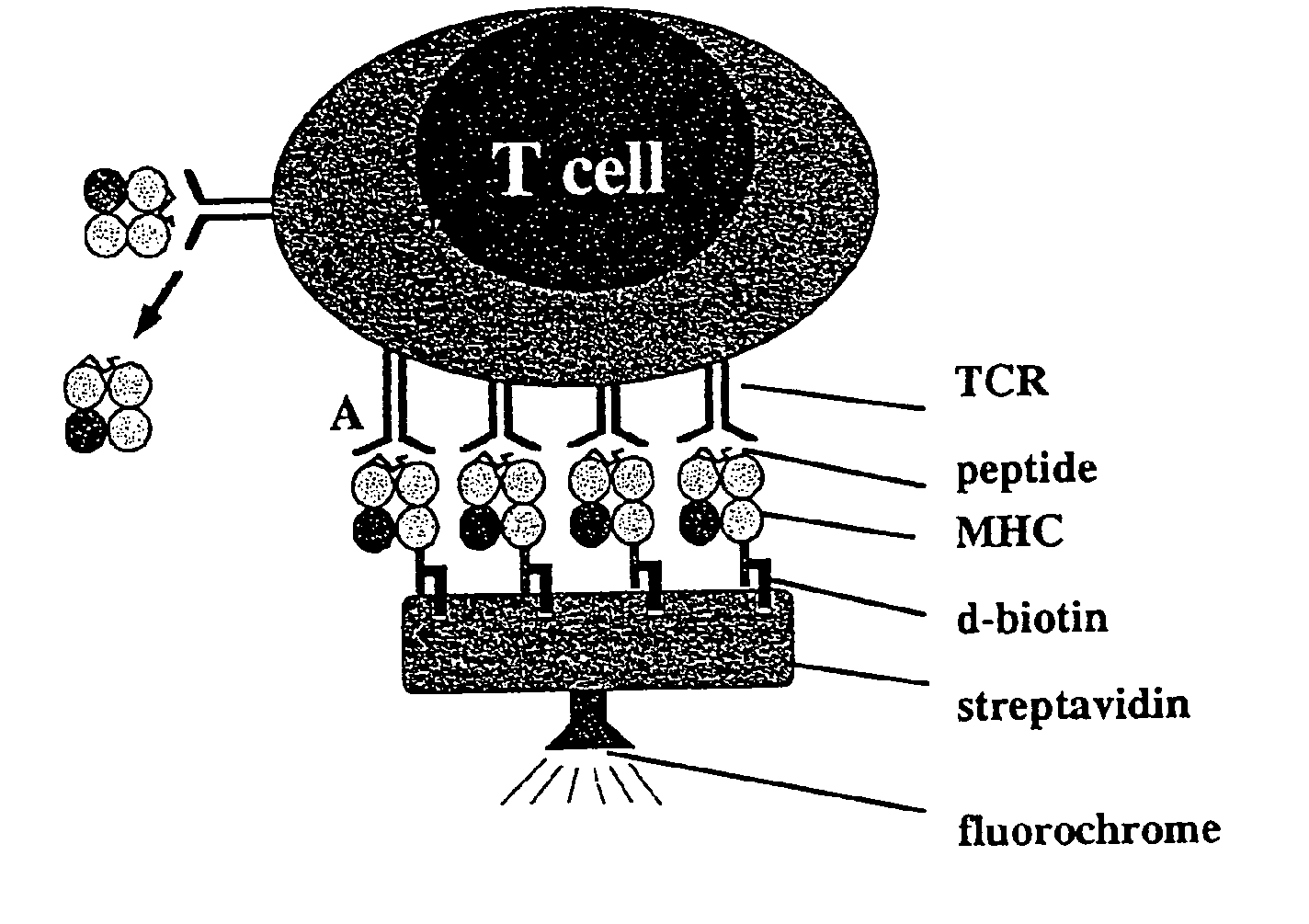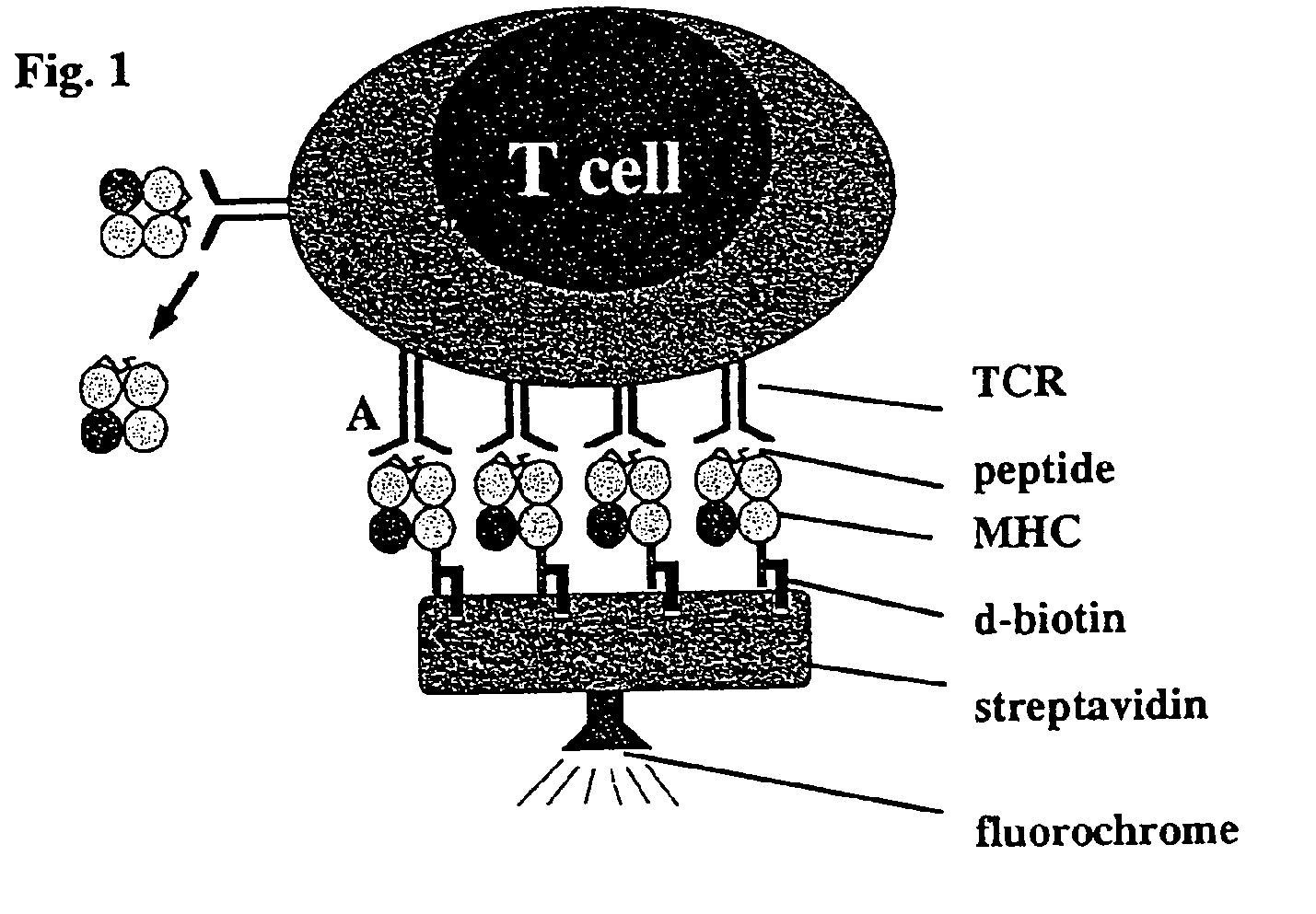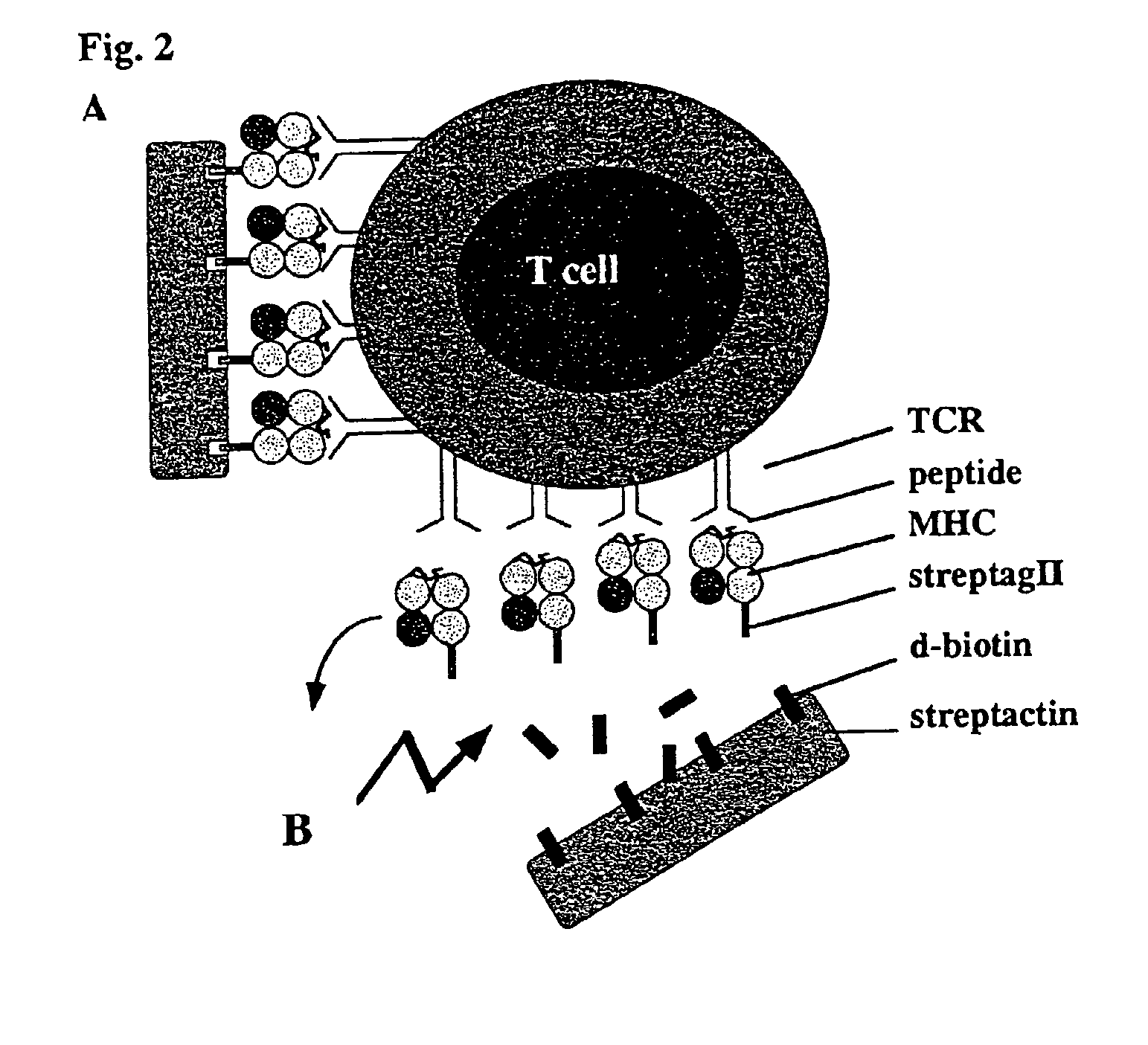Reversible MHC multimer staining for functional purification of antigen-specific T cells
a t cell and multimer technology, applied in the field of reversible staining and functional isolation or characterization of cells, can solve the problems of dramatic alteration of purified t cell populations, early attempts to use the natural ligand of the tcr—the mhc/epitope complex—for direct identification of epitope-specific t cells, etc., and achieve the effect of preserving the functional status of cells
- Summary
- Abstract
- Description
- Claims
- Application Information
AI Technical Summary
Benefits of technology
Problems solved by technology
Method used
Image
Examples
examples
1. Materials and Methods
Generation of H2-Kd Strep-Tag® II Peptide (IBA GmbH) Fusion Proteins
[0078]The pET3a / H2-Kd expression vector (5) was mutated by standard PCR techniques to exchange the C-terminal biotinylation site to the Strep-tag® peptide (IBA GmbH) sequence. Protein expression was induced in the expression host 25 BL21(DE3) by addition of IPTG and subsequently, inclusion bodies were purified as described before (5).
[0079]In Vitro Refolding and Generation of Multimeric MHC Strep-Tag® II Peptide (IBA GmbH) Reagents
[0080]H2-Kd Strep-tag® peptide (IBA GmbH) and mouse f32-microglobulin (containing a HSV epitope tag at the C-terminus) inclusion bodies were dissolved in 8 M urea and thereafter refolded by rapid dilution into arginine-rich buffer in the presence of high amounts of synthetic MHC binding peptide (here: 0.5 mg / ml LLO91-99, GYKDGNEYI or p60217-225, KYGVSVQDI, respectively) as described previously (5). Soluble MHC complexes were further purified by gel filtration (Super...
PUM
| Property | Measurement | Unit |
|---|---|---|
| temperature | aaaaa | aaaaa |
| temperature | aaaaa | aaaaa |
| temperature | aaaaa | aaaaa |
Abstract
Description
Claims
Application Information
 Login to View More
Login to View More - R&D
- Intellectual Property
- Life Sciences
- Materials
- Tech Scout
- Unparalleled Data Quality
- Higher Quality Content
- 60% Fewer Hallucinations
Browse by: Latest US Patents, China's latest patents, Technical Efficacy Thesaurus, Application Domain, Technology Topic, Popular Technical Reports.
© 2025 PatSnap. All rights reserved.Legal|Privacy policy|Modern Slavery Act Transparency Statement|Sitemap|About US| Contact US: help@patsnap.com



